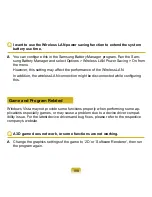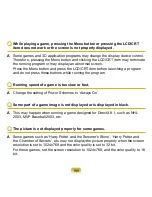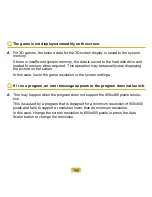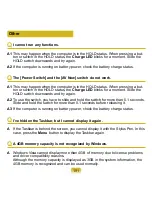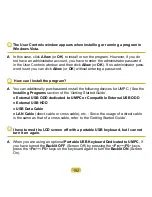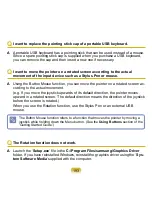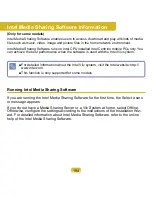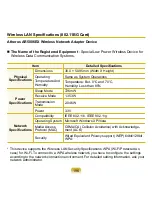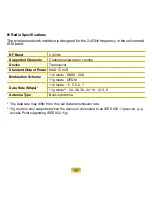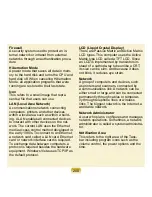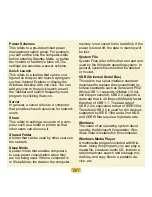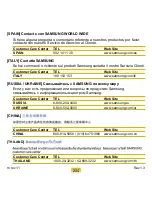
201
Power Schemes
This refers to a pre-determined power
management option group. For example,
you can set the time the computer waits
before entering Standby Mode, or before
the monitor or hard drive turns off. The
settings are saved as a power scheme.
Quick Launch
This refers to a toolbar that can be con-
figured so that you can launch a program
such as Internet Explorer or display the
Windows Desktop with one click. You can
add any icon to the quick launch area of
the Taskbar and launch frequently used
program by clicking that icon.
Server
In general, a server refers to a computer
that provides shared resources for network
users.
Share
This refers to setting a resource of a com-
puter such as a folder or printer so that
other users can also use it.
Shared Folder
A folder that can be used by other users on
the network.
Sleep Mode
A power mode that enables computers
to save power consumption when they
are not being used. When a computer is
in Sleep Mode, the data on the computer
memory is not saved to the hard disk. If the
power is tuned off, the data in memory will
be lost.
System File
System Files refer to files that are read and
used by the Windows operating system. In
general, system files must not be deleted
or moved.
USB (Universal Serial Bus)
This refers to a serial interface standard
developed to replace the conventional in-
terface standards such as Serial and PS/2.
While USB 1.1 supports 12Mbps (12 mil-
lion bits per second), USB 2.0 supports a
data rate that is 40 times (480Mpbs) faster
than that of USB 1.1. The data rate of
USB 2.0 is equivalent to that of IEEE1394.
Therefore USB 2.0 is used for A/V devices
supported by IEEE 1394 and a 2nd HDD
and CDRW that require a high data rate.
Windows
The name of an operating system devel-
oped by the Microsoft Corporation. Win-
dows Vista is installed on this computer.
Windows Media Player
A multimedia program included with Win-
dows. Using this program, you can play a
media file, create an audio CD, listen to a
radio broadcast, search and manage me-
dia files, and copy files to a portable de-
vice, etc.


